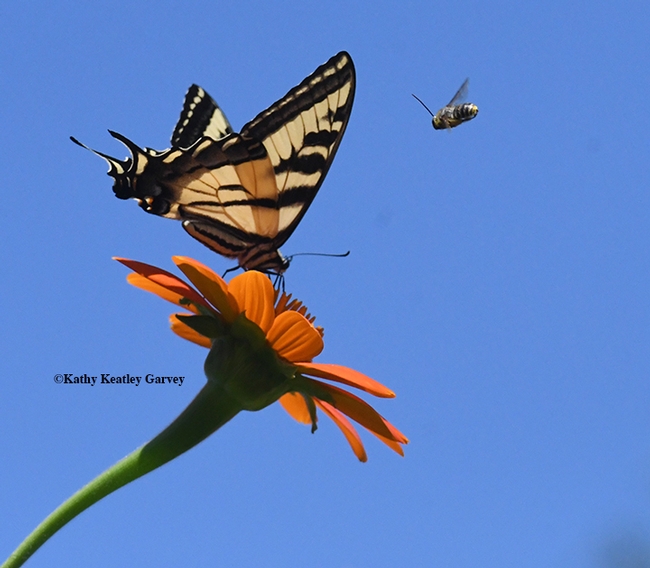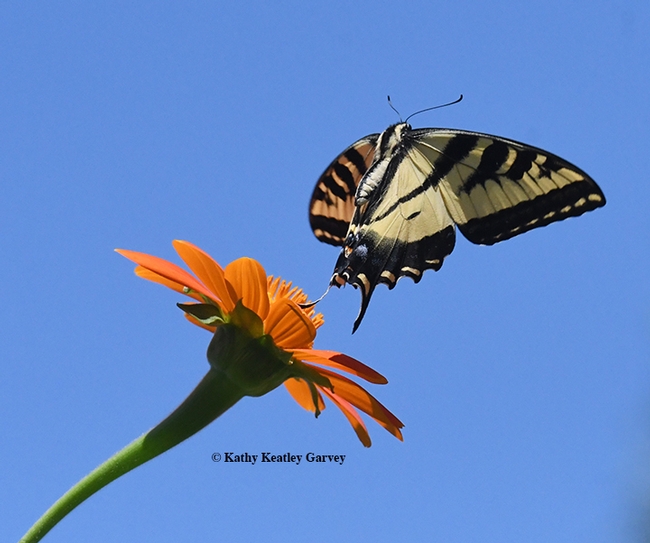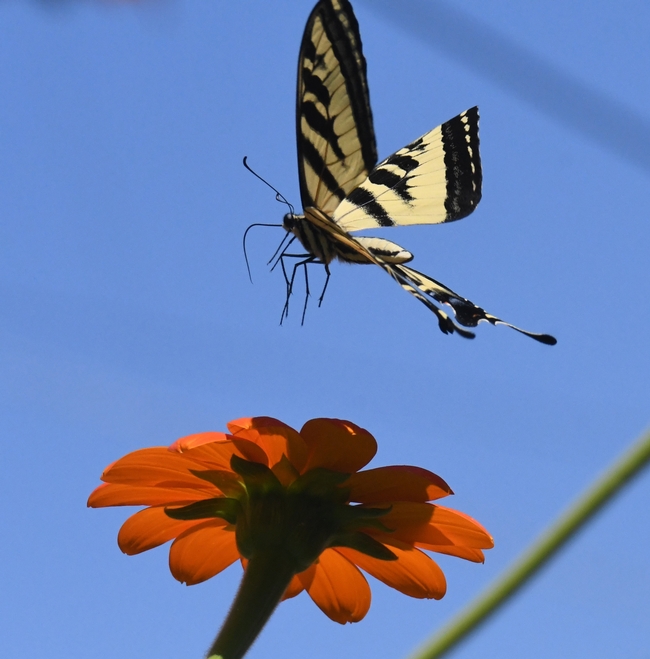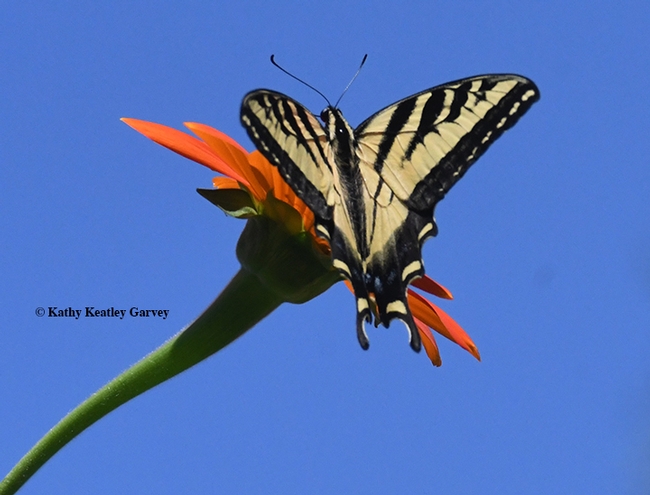- Author: Kathy Keatley Garvey
It's Thanksgiving Day, and what better day to stop and be thankful for not only family and friends, but for the beauty around us.
That would include insects, including the stunning Western tiger swallowtail (Papilio rutulus).
Last summer we enjoyed watching a very gravid female, with a three-to-four-inch wingspan, nectaring on a butterfly bush (Buddleia davidii) in our Vacaville pollinator garden.
She also nectared on Verbena before departing--probably to lay her eggs on a nearby host plant, liquidambar (sweet gum) or a sycamore.
For just a few minutes, the Western tiger swallowtail graced our pollinator garden with her breathtaking beauty. We are thankful for her presence, and the presence of all the pollinators, past, present and future, in our little pollinator garden.
"Without the actions of pollinators, agricultural economies, our food supply, and surrounding landscapes would collapse," points out the Pollinator Partnership. "Birds, bats, bees, butterflies, beetles, and other small mammals that pollinate plants are responsible for bringing us one out of every three bites of food."
Happy Thanksgiving!
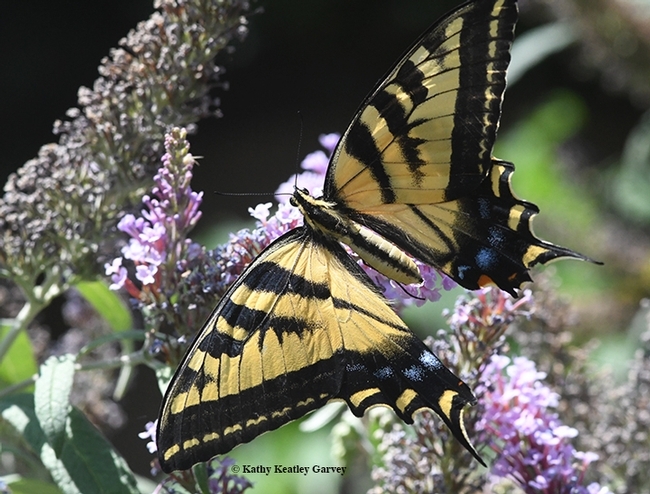
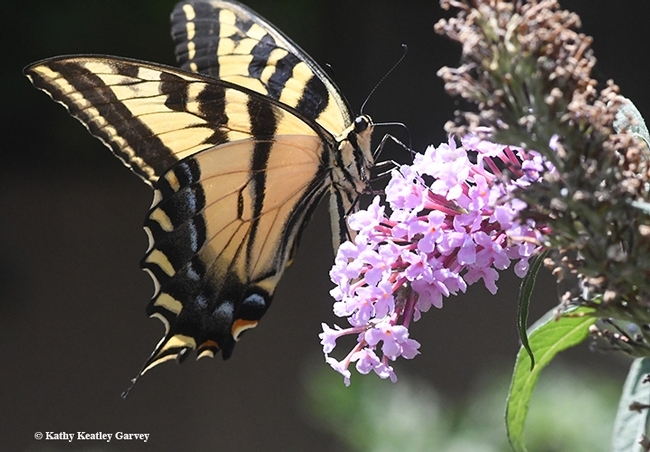
- Author: Kathy Keatley Garvey
One of the joys of planting a pollinator garden is watching majestic butterflies flutter in and sip a little nectar.
Today a Western tiger swallowtail (Papilio rutulus) took a liking to a butterfly bush (Buddleia davidii) in our Vacaville garden.
The "very gravid" female (as identified by Art Shapiro, distinguished professor of evolution and ecology at the University of California, Davis) also nectared on Verbena before departing--probably to lay her eggs on a favorite host plant, liquidambar (sweet gum) or the nearby sycamore.
During her 10-minute visit that graced our garden, the brilliantly colored yellow-and-black butterfly, with a wingspan of three to four inches, managed to evade the California scrub jays looking for a quick meal.
A meal for the butterfly, none for the bird.
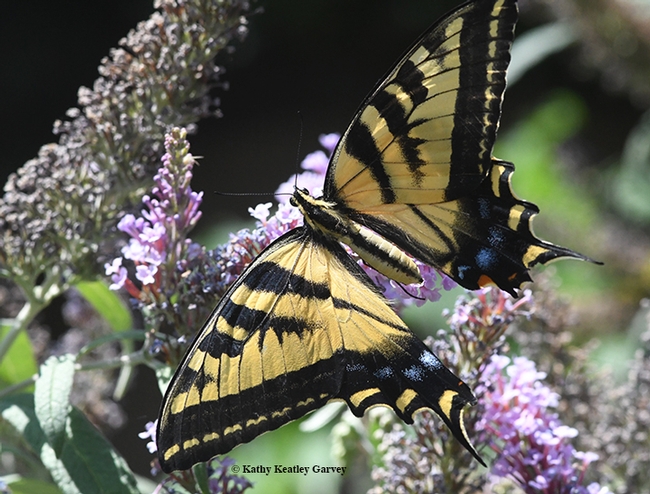
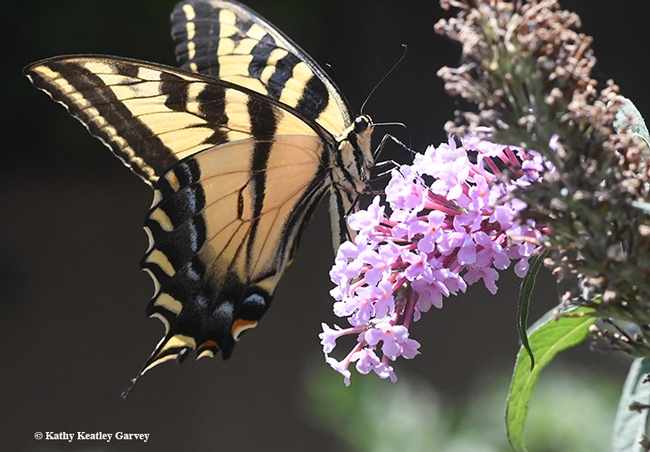
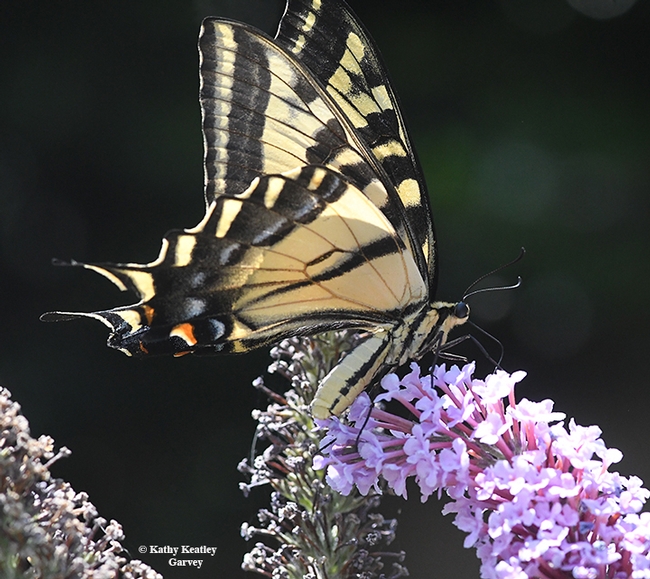
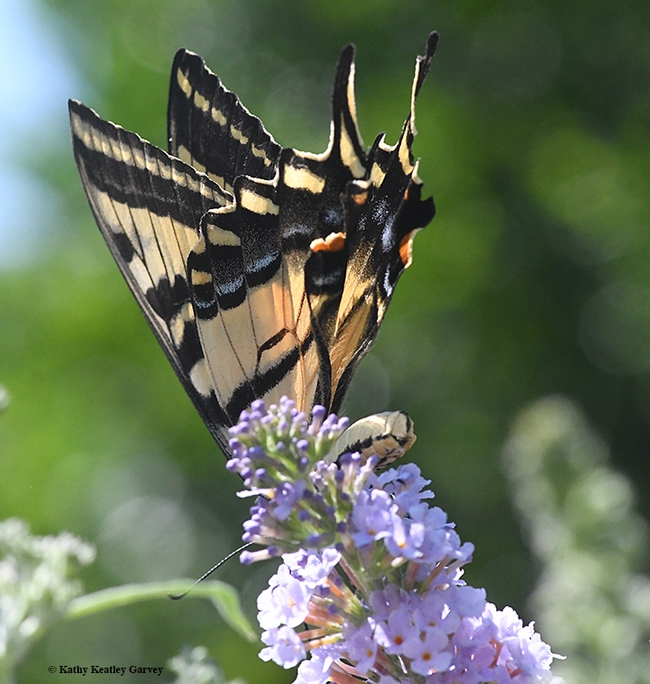
- Author: Kathy Keatley Garvey
How would you describe the year 2017?
Survival of the fittest?
In the insect world, it's more like "survival of the flittest."
If you've ever pulled up a chair in a pollinator garden and sat back and observed all the activity, sometimes it's like road rage on the freeway and aisle anger in the supermarket.
- Have you ever seen a male long-horned bee (Melissodes agilis) doing a protective fly-by, trying to save a food source for the female of his species?
- Have you ever seen a male long-horned bee challenging a Western tiger swallowtail seeking nectar from a Mexican sunflowers (Tithonia)?
- Have you ever seen a syrphid fly targeting a honeydew-laden lady beetle, aka ladybug, on a rose?
- Have you ever seen a honey bee and bumble bee racing for the nectar on catmint (Nepeta)?
You may if you plant a pollinator garden. Plant it and they--bees and butterflies and other pollinators--will come.
In Chinese astrology, 2017 was The Year of the Rooster. Coming Jan. 1: The Year of the Dog. But there's no "Year of the Insect."
If entomologists had their way, one of the 12 animals of the Chinese zodiac (rat, ox, tiger, rabbit, dragon, snake, horse, goat, monkey, rooster, dog and pig), would be switched to an insect. Insects matter. Indeed, scientists trace the first known fossil record of insects back some 400 million years ago. The insect? A springtail.
Insects easily outnumber us and all other life forms. The population of the world today is 7 billion, according to a World Population Clock. Insects? "At any given time, it is estimated that there are some 10 quintillion (10,000,000,000,000,000,000) individual insects alive," says the Smithsonian Institute. This amounts to to largest biomass of the terrestrial animals.
Other fascinating points to ponder from the Smithsonian Institute involve undescribed and described species:
"Most authorities agree that there are more insect species that have not been described (named by science) than there are insect species that have been previously named. Conservative estimates suggest that this figure is 2 million, but estimates extend to 30 million. In the last decade, much attention has been given to the entomofauna that exists in the canopies of tropical forests of the world. From studies conducted by Terry Erwin of the Smithsonian Institution's Department of Entomology in Latin American forest canopies, the number of living species of insects has been estimated to be 30 million."
"In the United States, the number of described species is approximately 91,000. The undescribed species of insects in the United States, however, is estimated at some 73,000." Four insect orders comprise the largest numbers of described species in the U.S.:
- Coleoptera (beetles): 23,700
- Diptera (flies): 19,600
- Hymenoptera (ants, bees, wasps): 17,500
- Lepidoptera (moths and butterflies): 11,500.
Today (the last Friday before the New Year) is a good time to think about "survival of the fittest" and "survival of the flittest" as we glance back at 2017 and look forward to 2018.
Happy New Year! And may all your gardens be pollinator gardens filled with bees and butterflies. And, a few syrphid flies, lady beetles...and...
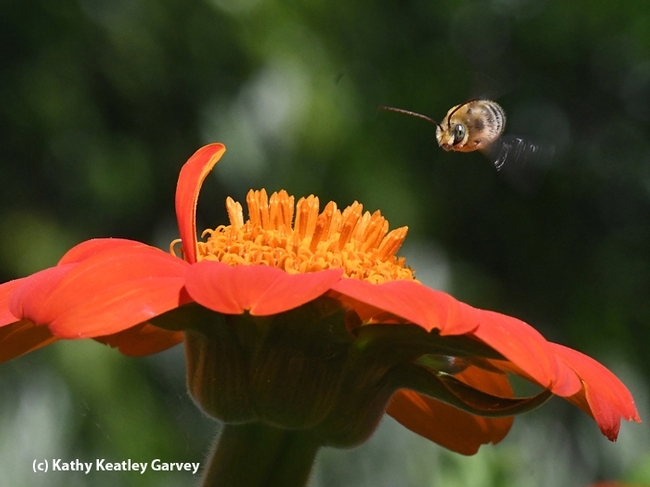
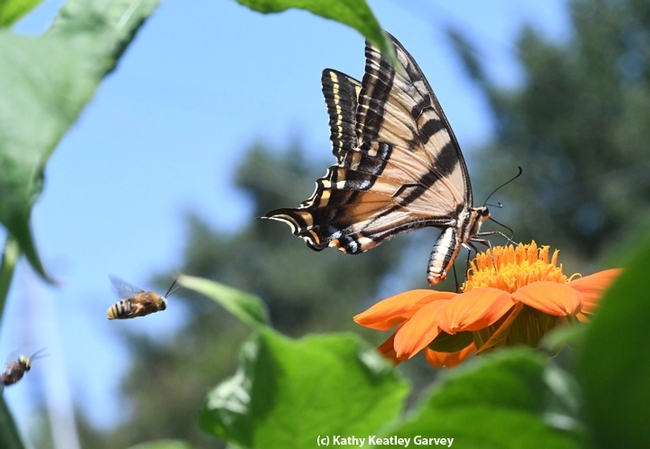
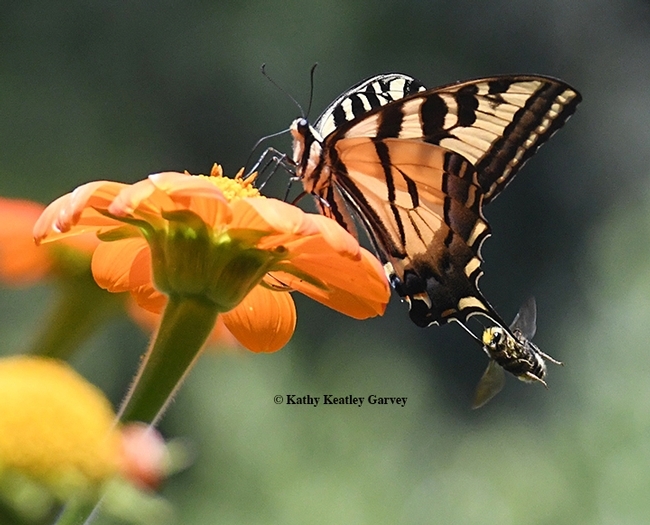
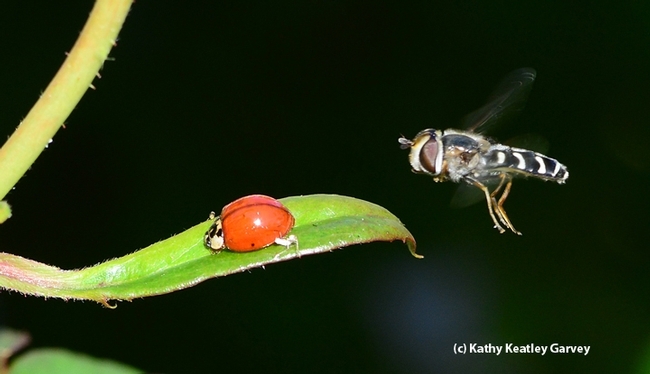
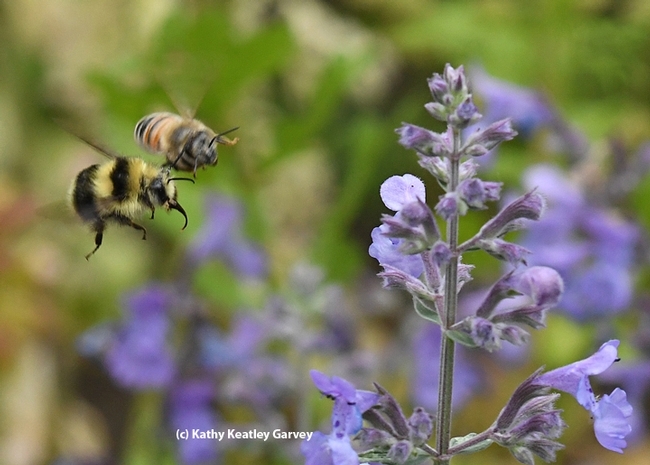
- Author: Kathy Keatley Garvey
One of Buck Owens' signature songs that never failed to please his fan base was "I Got a Tiger by the Tail."
The Country-Hall-of-Fame singer, who died in 2006 at age 76, said the lyrics came to him after he noticed a gas station sign advertising "Put a tiger in your tank." (Source: Wikipedia)
"I've got a tiger by the tail, it's plain to see," sang Buck Owens. "I won't be much when you get through with me..."
Well, he's not the only one with a "tiger by the tail."
We recently spotted male longhorn bees, probably Melissodes agilis, targeting Western tiger swallowtails, Papilio rutulus, in our family's pollinator garden in Vacaville, Calif. The butterflies were trying to sip nectar from the 8 to 10-foot-high Mexican sunflowers (genus Tithonia).
Who knew that sipping nectar could be so difficult? The extremely territorial male longhorn bees kept trying to push the "tigers" off the Tithonia by dive-bombing them, slamming into them, and then regrouping for more aerial assaults. Their goal: to save the resources for their own species.
And then it happened. A longhorn bee slid through a tiger's tail.
A tiger by the tail.
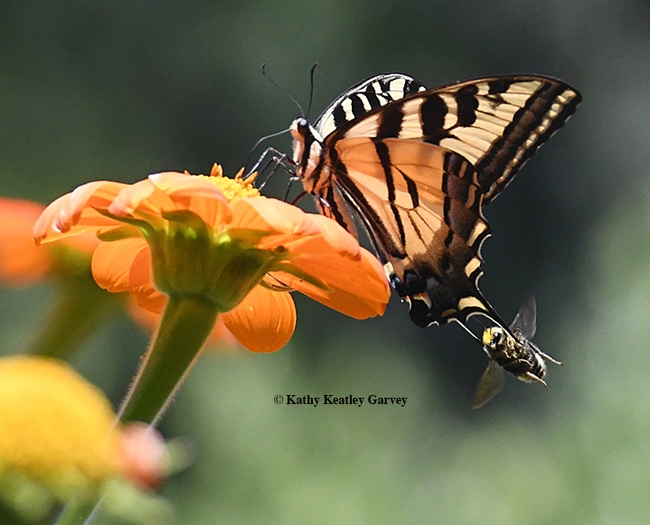
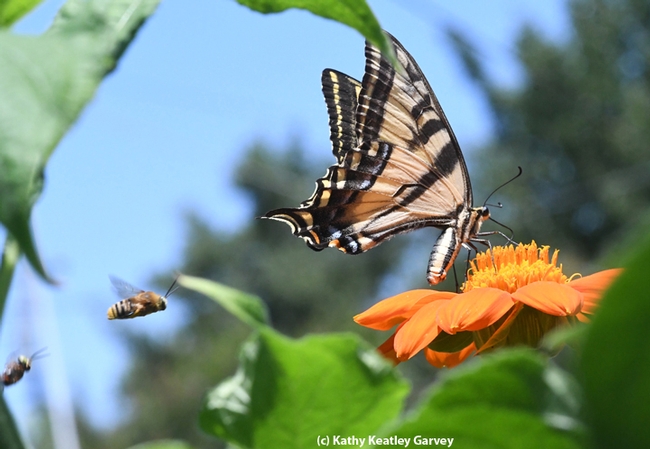
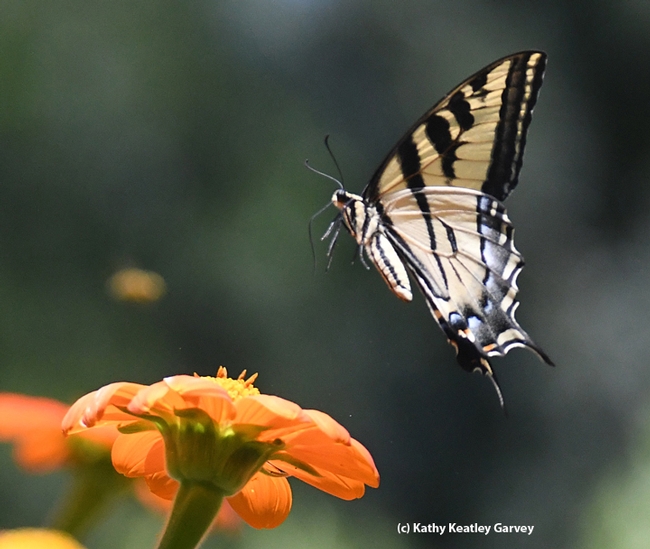
- Author: Kathy Keatley Garvey
Talk about a butterfly ballet...
A large Western tiger swallowtail, Papilio rutulus, with a wingspan of about four inches, flutters into the Vacaville, Calif. pollinator garden and lands on a Mexican sunflower (Tithonia). It proceeds to nectar, unaware that the patch "belongs" to a male territorial longhorn bee. The bee, probably a Melissodes agilis, is saving it for the female of the species, not for "intruders."
The bee targets the brightly colored yellow and black butterfly. It buzzes the wings, returns, executes a barrel roll and dive-bombs the butterfly. Again. Again. And again. From all sides.
What to do? Continue sipping nectar or flee?
The Western tiger swallowtail takes flight, but just heads to another Tithonia blossom where the aerial assault continues.
